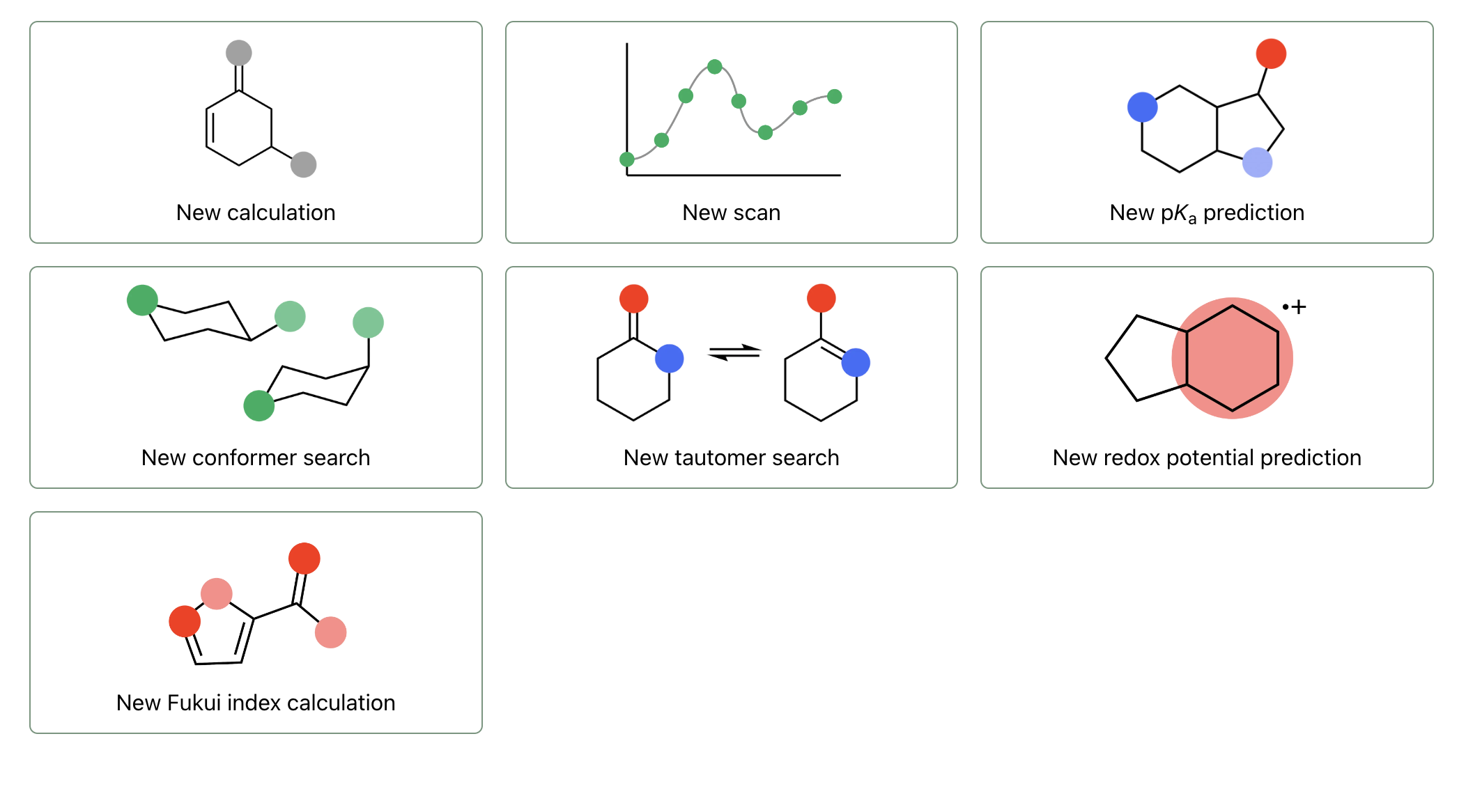Submitting a Transition State Optimization
To run a new TS optimization, find your way to this screen in Rowan:

If you're currently viewing a calculation or workflow you already ran, hit the "X" icon in the top left of your screen, just below the navigation bar.
To start submitting a TS optimization, click "New calculation."
Select a Molecule
Calculations in Rowan are run on molecules (or systems of molecules).
To upload a molecule, you can use any of the following input formats:
- Upload a file, using the "Upload Files" button. (Rowan accepts .xyz, .gjf, .out, .mol2, and .mae chemical file formats.)
- Input a SMILES string, using the "Input SMILES" button.
- Paste XYZ coordinates, using the "Paste XYZ" button.
- Drag and drop files anywhere on the new calculation page.
For small molecules, it's often easiest to start with a SMILES string. Many 2D molecule drawing programs, including ChemDraw and MarvinJS, will let you export/copy structures as SMILES.
Editing Structures
To modify a structure you've already input, you can click the pencil icon in the top right corner of the molecule viewer and use Rowan's 3D editor.
Charge and Multiplicity
Make sure to set the charge and spin multiplicity for your selected molecule.
Level of Theory
Select the level of theory you'd like to run your calculation at by choosing an appropriate method and basis set.
Rowan won't let you submit a calculation with an incomplete basis set for the molecules you've input.
If any input field shows red, hover over it and read the text that will appear for information about the error.
Corrections
If the engine and method you've selected supports it, use the dropdown to select a correction (currently, Rowan only supports the D3BJ correction).
Solvent
If the engine and method you've selected supports it, click on the solvent field to select a solvent model and solvent.
Tasks
Select the tasks you'd like to run on your structure by clicking the corresponding checkboxes.
To run a TS optimization, check "Optimize (TS)."
Rowan can run the following tasks:
- Single Point Energy
- Gradient
- Charge
- Spin Density
- Dipole
- Hessian/Frequencies
- Thermochemistry
- Optimize
- Optimize (TS)
When "Optimize" is selected, Rowan will always conduct the geometry/TS optimization first and carry out all other tasks on the final structure.
Adding Constraints
If you want to constrain your geometry optimization, you can add constraints. (This is optional.) You can constrain a bond length, an angle, or a dihedral angle.
Adding a constraint means the given bond length or angle won't change during the geometry optimization process.
To add a constraint, click "Add new constraint" at the bottom of the new calculation page. Select the type of coordinate you'd like to constrain and input the appropriate indices. You can also select the atoms using the molecule viewer by first selecting the constraint row and then clicking on the atoms.
Be sure to input the right indices in the right order, otherwise you'll get unexpected results. (Angle A–B–C is not equivalent to angle B–A–C!)